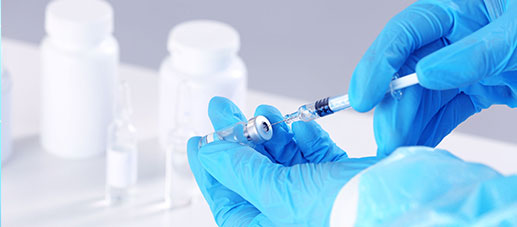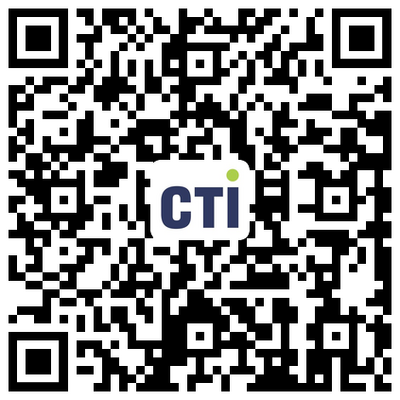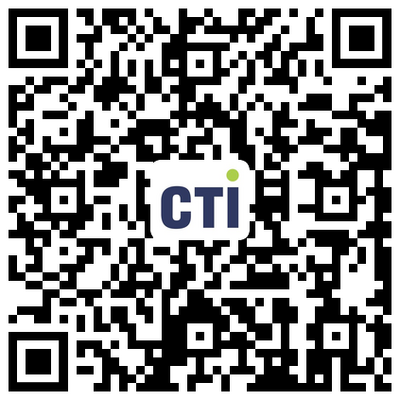- Home
- About CTI
- Our Services
- Investor Relations
- CTI Mall
- Resource Center
- Reports Validation
- Join Us
-
 Overview
Overview
Centre Testing International Group Co., Ltd. (CTI) is a market leader in testing, inspection, certification, calibration, audit, training & technical services; building trust between governments, enterprises, and consumers.
-
 Sustainability
SustainabilitySustainability is deeply rooted in CTI’s business model, by delivering science-based solutions and verification services, to increase transparency and traceability throughout the global value chain. CTI is a proponent of carbon neutrality and sustainable development.
-
 Our service
Our serviceCentre Testing International Co., Ltd. (CTI) is the pioneer and leader in the TIC Industry which provides one-stop solutions on testing, inspection, certification, calibration, audit, training & technical services.
-
By Industry
Our service capabilties cover the upstream and downstream of the supply chain including textile and apparel,toys,electronic appliances,medical health,food...andother industries.
-
 Environment
Environment
-
 Raw Material & Fuel Chemicals
Raw Material & Fuel Chemicals
-
 Textiles, Apparel, Footwear & Accessories
Textiles, Apparel, Footwear & Accessories
-
 Food & Agricultural Products
Food & Agricultural Products
-
 Cosmetics, Personal Care & Household Chemicals
Cosmetics, Personal Care & Household Chemicals
-
 Building Materials&Construction Engineering
Building Materials&Construction Engineering
-
 Electronic & Electrical Appliances
Electronic & Electrical Appliances
-
 Toys, Furniture & Home Decoration
Toys, Furniture & Home Decoration
-
 Industrial Equipment & Manufacturing
Industrial Equipment & Manufacturing
-
 Rail & Aviation
Rail & Aviation
-
 Automotive & Spare Parts
Automotive & Spare Parts
-
 Pharma and Medical Services
Pharma and Medical Services
-
 Maritime Vessel Compliance Testing
Maritime Vessel Compliance Testing
 By Industry
By IndustryOur service capabilties cover the upstream and downstream of the supply chain including textile and apparel,toys,electronic appliances,medical health,food...andother industries.
-
-
 Specialty
SpecialtyComprehensively guarantee quality and safety, promote compliance and innovation, demonstrate brand competitiveness, and achieve higher quality, healthier, safer, and greener sustainable development.
-
 Management
ManagementWe have established a clear governance structure in accordance with listing requirements and national regulations and policies to deal with internal and external challenges and achieve sustainable development.
-
 Information DisclosureWe are committed to establishing normal and effective two-way communication with shareholders and investors. We have established a complete information disclosure mechanism to convey information to shareholders in a timely manner.
Information DisclosureWe are committed to establishing normal and effective two-way communication with shareholders and investors. We have established a complete information disclosure mechanism to convey information to shareholders in a timely manner.
-
 Talents Policy
Talents PolicyEnsuring the basic rights and benefits of employees;
Providing professional skills training to promote employees’ growth;
Carrying out various kinds of activities to balance employees’ work and life.
-
 RecruitmentWelcome to join CTI family! We are providing a platform for you to show your talents and achieve your career aspiration.
RecruitmentWelcome to join CTI family! We are providing a platform for you to show your talents and achieve your career aspiration.
- Resource Center
- Application Forms
- Bulletin
- Training Center
- CTI Academy
- Reports Validation

Singapore RoHS will come into Force in 2017
On 1 June 2016, Singapore's Ministry of the Environment and Water Resources (MEWR) released S 263/2016 to amend the Second Schedule of the Environmental Protection and Management Act, prohibiting the use of six hazardous substances in EEE products. It will take effect on 1 June 2017. The substances it restricts are: cadmium and its compounds, hexavalent chromium, lead and its compounds, mercury and its compounds, polybrominated biphenyls and polybrominated diphenyl ethers. It applies to a much narrower list of products: mobile phones, laptops, refrigerators, air conditioners, panel television sets and washing machines. Batteries and accumulators, and products designed for industrial use only are excluded.
Main Content
| Substances | Limits | Exclusions |
| Cadmium and its compounds | 0.01% | Cadmium and its compounds in electrical contact; Cadmium in filter glass or glass used for reflectance standards; Cadmium in printing ink for the application of enamel on glass; Cadmium alloy as electrical or mechanical solder joint to electrical conductor located directly on voice coil in transducer used in high-powered loudspeaker with sound pressure level of 100 dB (A) or more; Cadmium and cadmium oxide in thick film paste used on aluminium bonded beryllium oxide. |
| Hexavalent chromium | 0.1% | Hexavalent chromium as anticorrosion agent, not exceeding 0.75% by weight, in the cooling solution of carbon steel cooling system in absorption refrigerator. |
| Lead and its compounds | 0.1% | Lead in glass of cathode ray tube; Lead, not exceeding 0.2% by weight, in glass of fluorescent tube; Lead, not exceeding 0.35% by weight, as an alloying element in steel for machining purposes or galvanised steel; Lead, not exceeding 0.4% by weight, as an alloying element in aluminium; Lead, not exceeding 4% by weight, in copper alloy; Lead in high melting temperature type solder (that is, lead-based alloy containing 85% by weight or more lead); Electrical and electronic component containing lead in –– (a) glass or ceramic (other than dielectric ceramic in capacitor); (b) glass or ceramic matrix compound; Lead in dielectric ceramic in capacitor for rated voltage of 125 V AC , 250 V DC or higher; Lead in bearing shell or bush for refrigerant-containing compressor for heating, ventilation, air conditioning or refrigeration application; Lead in white glass for optical application; Lead in filter glass or glass used for reflectance standards; Lead in printing ink for the application of enamel on glass; Lead in solder for –– (a) completing viable electrical connection between semiconductor die and carrier within integrated circuit flip chip package; (b) soldering to machinedthrough hole discoidal or planar array ceramic multilayer capacitor; (c) soldering thin copper wire (with diameter not exceeding 100 μm) in power transformer; Lead in soldering materials in mercury-free flat fluorescent lamp; Lead oxide in surface conduction electron emitter display used in structural element; Lead bound in crystal glass; Lead in cermet-based trimmer potentiometer element; Lead in plating layer of highvoltage diode on base of zinc borate glass body. |
| Mercury and its compounds | 0.1% | Cold cathode fluorescent lamp or external electrode fluorescent lamp, used for purposes other than general lighting, that –– (a) is not more than 500 mm long and contains not more than 3.5 mg of mercury; (b) is more than 500 mm long but not more than 1500 mm long and contains not more than 5 mg of mercury; or (c) is more than 1500 mm long and contains not more than 13 mg of mercury. |
| PBBs | 0.1% | / |
| PBDEs | 0.1% | / |
More information: http://statutes.agc.gov.sg/aol/search/display/view.w3p;page=0;query=Id%3A96fd5245-c724-4875-ace6-6d30a7dac0a6%20Depth%3A0%20Status%3Apublished%20Published%3A01%2F06%2F2016;rec=0;resUrl=http%3A%2F%2Fstatutes.agc.gov.sg%2Faol%2Fsearch%2Fsummary%2Fresults.w3p%3Bpage%3D0%3Bquery%3DId%253A96fd5245-c724-4875-ace6-6d30a7dac0a6%2520Depth%253A0%2520Status%253Apublished%2520Published%253A01%252F06%252F2016
Related recommendations
Media Inquiries
- 400-6788-333
- mkd@yilussjy.com
- About CTI
- Our Services
- Investor Relations
- CTI Mall
-
Resource Center
- Application Forms
- Bulletin
- Training Center
- CTI Academy
- Reports Validation
-
Join Us
- Talents Policy
- Recruitment




















 粤公网安备 44030602000441号
粤公网安备 44030602000441号 